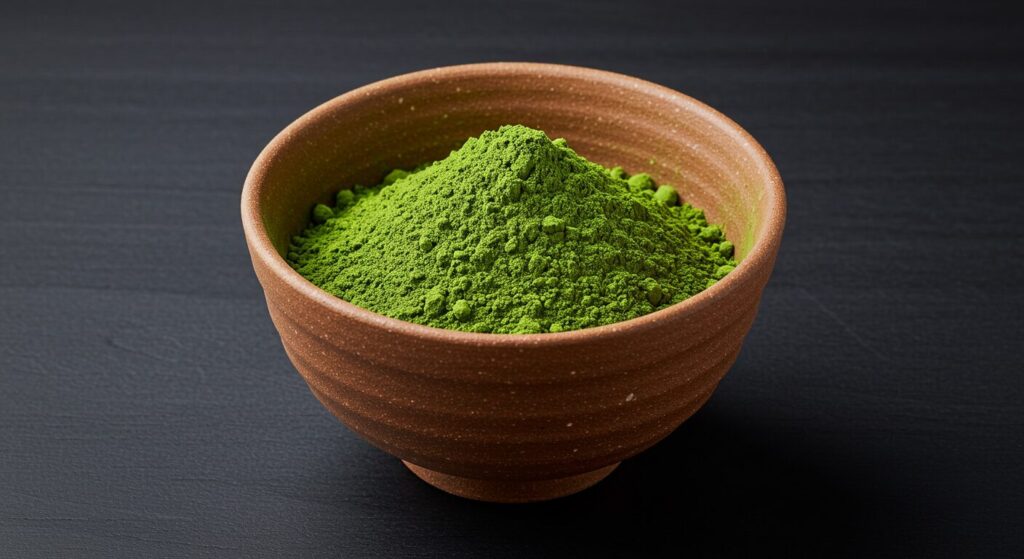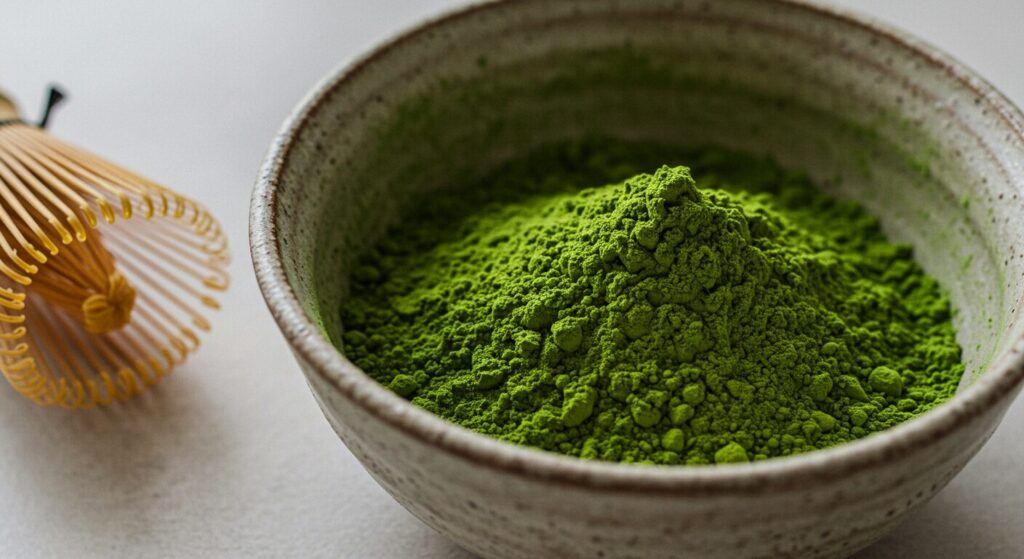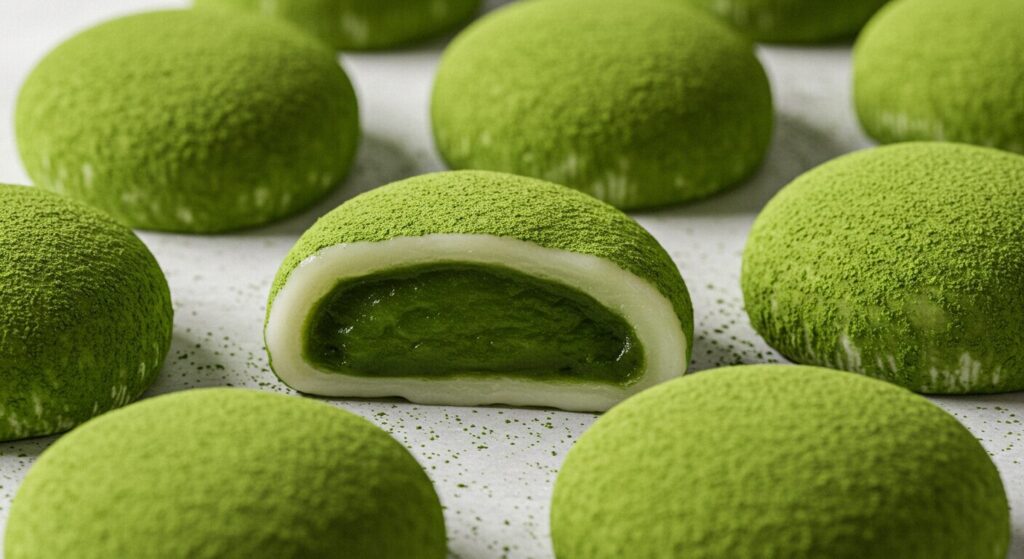Matcha has transcended its traditional Japanese roots to become a global phenomenon, captivating tea enthusiasts and health-conscious consumers worldwide.
When searching for the perfect recommended matcha powder, understanding quality indicators, origins, and preparation methods becomes essential for making an informed purchase decision.
This site participates in the Amazon Associates Program. Please support us.

Understanding Premium Matcha Powder Quality
The finest matcha powder originates from carefully cultivated tea plants that undergo a unique shading process called "tana." This traditional technique involves covering tea plants with bamboo mats or tarps for several weeks before harvest, encouraging higher chlorophyll production and creating that distinctive vibrant green color that characterizes premium matcha.
Key Quality Indicators to Consider
When evaluating recommended matcha powder, several factors distinguish exceptional products from mediocre alternatives:
Color and Texture: Authentic premium matcha displays a brilliant jade-green hue with an ultra-fine, silky texture.
Dull or yellowish powder typically indicates lower quality or improper storage conditions.
Aroma Profile: Superior matcha emanates a fresh, vegetal fragrance with subtle sweet undertones.
Any musty or stale odors suggest compromised quality.
Origin Certification: The most recommended matcha powder comes from specific Japanese regions renowned for their tea cultivation expertise, particularly Uji in Kyoto Prefecture, Nishio in Aichi Prefecture, and parts of Kagoshima.
Regional Varieties and Their Unique Characteristics
Uji Matcha
Uji matcha represents the pinnacle of Japanese tea artisanship.
This recommended matcha powder possesses a complex flavor profile, perfectly balanced between rich umami and natural sweetness.
The region's ideal climate and centuries-old cultivation techniques consistently produce exceptional quality.
Nishio Matcha
Nishio's matcha powder benefits from fertile soil and optimal growing conditions.
This variety typically provides a more approachable flavor profile, making it an excellent recommended matcha powder for newcomers to traditional Japanese tea culture.
Ippodo Tea Shop Matcha
Founded in 1717, Ippodo Tea Shop has been providing carefully selected Japanese tea in the heart of Kyoto for over 300 years.
In addition to retailing tea, the shop has grown into a specialty store that handles a wide range of tea-related tasks, from selecting tea leaves to blending and refining.
The tea leaves they sell are of the highest quality, lovingly grown in the mountainous areas of Kyoto Prefecture and the surrounding area.
Ito En Oi Ocha Uji Matcha
Founded in 1966, Ito En is known as one of Japan's leading green tea manufacturers.
The company's signature "Oi Ocha" series also includes matcha products.
Made exclusively from tea leaves grown in Uji, the matcha is finely ground using traditional stone milling methods and is characterized by its beautiful green color and smooth texture.
It can be used not only in the tea ceremony, but also in a wide range of applications, such as in confectionery and as a flavoring for cooking.
This matcha is made from the finest tea leaves grown in Uji and is a unique blend created by Senkyu, a matcha specialty store.
We deal directly with excellent tea farmers in Uji who have won numerous awards, including the Prime Minister's Award, to provide matcha with a deep richness and umami flavor.
Morihan Matcha
Morihan, which began its tea business in Uji-Kokura in 1836, has a long history in this region renowned for its gyokuro and matcha teas. As evidenced by two wins at the National Tea Appraisal Competition, the company has established a reputation as one of Japan's leading tea masters.
The company focuses on selecting high-quality tea leaves and continues to improve the quality of Japanese tea through the introduction of cutting-edge technology.
Its tea factory and logistics center have achieved FSSC 22000 certification, the highest international food safety standard, ensuring thorough safety.
While maintaining its traditional product lineup of tea leaves, matcha powder, tea bags, and matcha confections, the company also focuses on developing innovative products.
Matcha has evolved from its traditional use in Japanese sweets and tea soba noodles to a more diverse range of uses today.
Matcha drinks have become a staple on cafe menus, and its use in Western-style sweets such as cakes and ice cream is expanding.
These high-quality, reliable products are highly regarded both domestically and internationally, and the company is actively expanding into overseas markets.
Tsujiri Matcha Latte
Tsujiri, which began business in Uji in 1860, was founded during the turbulent end of the Edo period.
At the time, Uji's tea farmers, having lost the protection of the shogunate, fell into poverty, and the degradation of tea plantations became a serious problem.
Founder Tsuji Riemon rose to the occasion and developed an innovative storage container called a tea chest to improve tea preservation techniques.
He also succeeded in perfecting the "gyokuro" manufacturing method, which produces needle-shaped tea leaves with a beautiful green color.
These technological innovations significantly improved the quality and market value of Uji tea, leading to its current status as a luxury tea.
Tsujiri's development and spread of tea-making techniques had a decisive impact on the revival of the Uji tea industry, and the company's growth trajectory represents the history of Uji tea's revival.
Grades and Applications
Understanding matcha grades helps consumers select the most appropriate recommended matcha powder for their intended use:
Ceremonial Grade: The highest quality matcha powder designed for traditional tea ceremonies.
This grade offers the most refined flavor experience and commands premium pricing.
Premium Grade: Excellent quality suitable for both traditional preparation and modern culinary applications.
This recommended matcha powder provides versatility without compromising authenticity.
Culinary Grade: Specifically formulated for cooking and baking applications.
While not recommended for traditional whisking, this matcha powder excels in lattes, desserts, and confections.
Preparation Techniques for Optimal Flavor
Proper preparation significantly impacts your matcha experience.
Traditional whisking techniques using a bamboo chasen (whisk) create the ideal frothy consistency that enhances flavor development.
Water Temperature: Use water heated to approximately 70-80°C
Boiling water can create bitterness and destroy delicate flavor compounds.
Whisking Method: Employ rapid "M" or "W" shaped motions to incorporate air and create a smooth, frothy surface.

Health Benefits and Nutritional Profile
Recommended matcha powder offers impressive nutritional density.
This concentrated green tea powder provides significantly higher antioxidant levels compared to regular brewed tea, as consumers ingest the entire leaf rather than just the extracted liquid.
The unique amino acid L-theanine present in quality matcha powder promotes calm alertness, creating a sustained energy boost without the jitters commonly associated with coffee consumption.
Storage and Freshness Considerations
Maintaining matcha powder quality requires proper storage techniques.
Keep unopened containers in refrigerated conditions, and once opened, consume within several months for optimal flavor retention.
Exposure to light, heat, and air rapidly degrades matcha quality, making airtight, opaque containers essential for preservation.
Culinary Applications Beyond Traditional Tea

Modern matcha powder applications extend far beyond traditional tea ceremonies.
This versatile ingredient enhances ice cream, chocolate confections, baked goods, and contemporary beverages.
When incorporating recommended matcha powder into recipes, balance becomes crucial.
Start with small quantities and adjust according to desired intensity, as high-quality matcha delivers concentrated flavor that can easily overwhelm other ingredients.
Conclusion
Selecting the ideal recommended matcha powder requires understanding quality indicators, regional characteristics, and intended applications.
Whether pursuing traditional tea ceremony experiences or exploring modern culinary creativity, investing in authentic, high-quality matcha ensures optimal flavor development and cultural authenticity.
The journey of discovering exceptional matcha powder opens doors to centuries of Japanese tea culture while providing modern health benefits and culinary versatility.
Take time to explore different varieties and preparation methods to fully appreciate this remarkable ingredient's potential.




